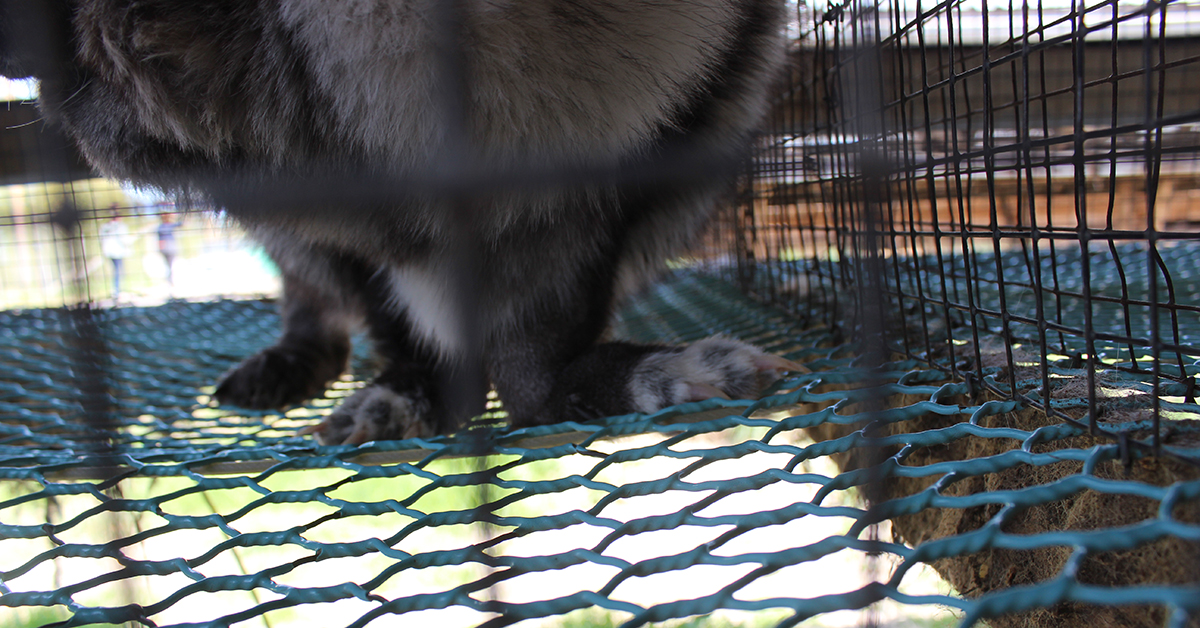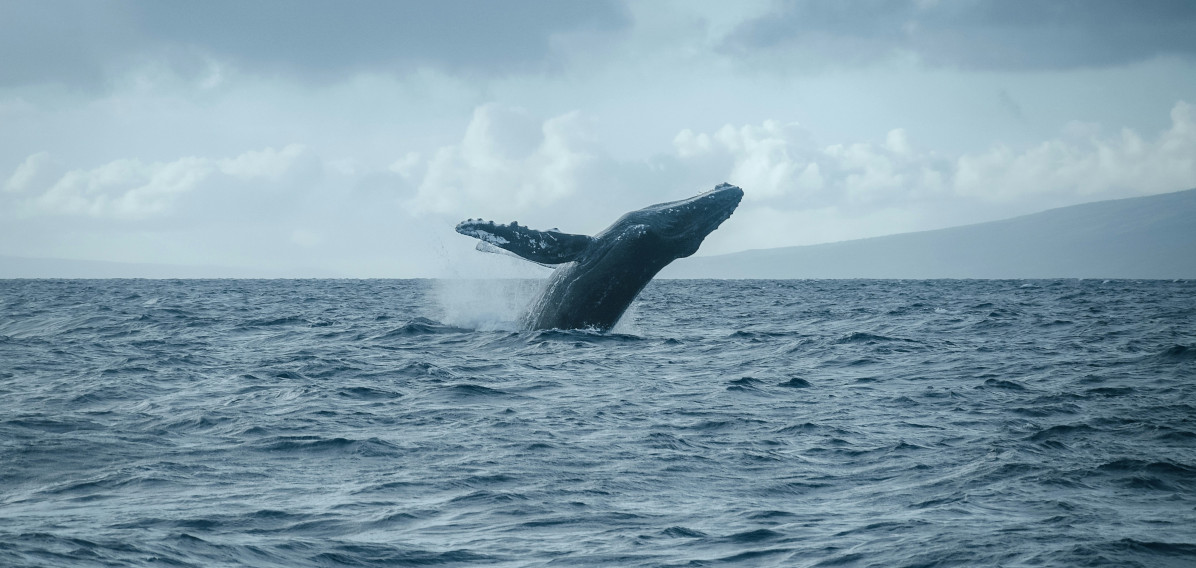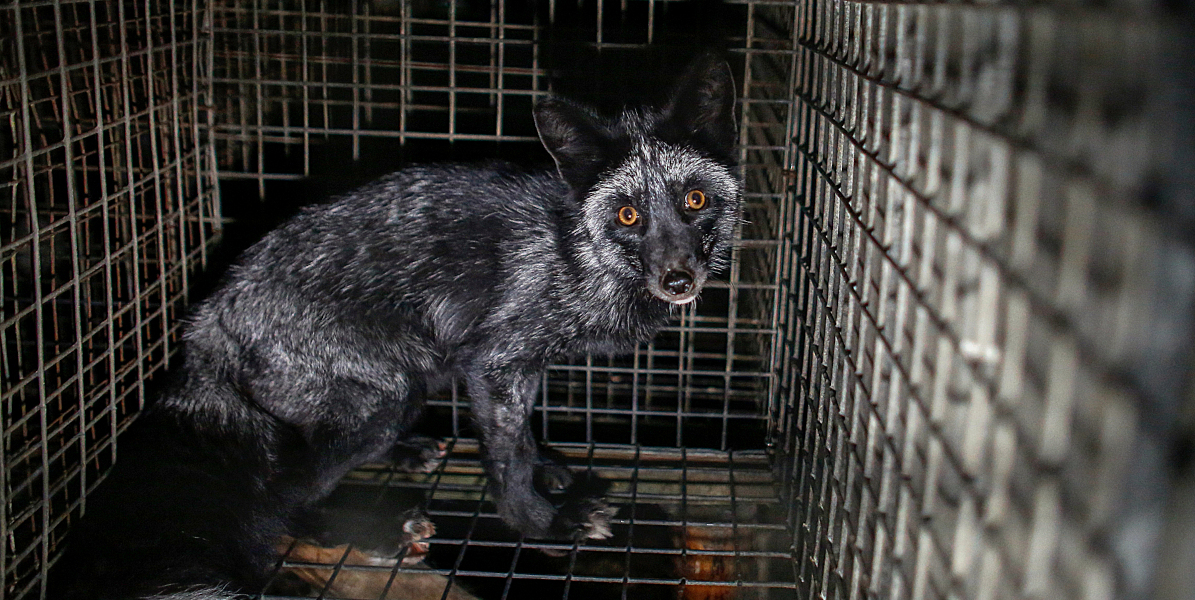WelFur is a certification programme created by the European fur industry to assess animal welfare. However, its requirements are largely the same as the minimum requirements set by existing legislation. WelFur offers transparency in a very limited sense where the focus is on the certification, not the animals.
Since the beginning of the 2000s, animal advocacy organisations around Europe have published photos and video footage from fur farms revealing sick animals, giant foxes and recurring cruelty. As more and more material has been released, fur has largely disappeared from high streets in many countries. In Europe, fur is now mainly used in accessories.
The fur industry is mostly based on exports to China and Russia where fur is still considered a luxury product. Numerous high-end designers and fashion houses such as Gucci, Chanel and Michael Kors, have gone fur-free and there is no sign of the trend slowing down. Retail clothing companies such as H&M are also giving up fur. Therefore, the European fur industry is in many ways facing a desperate situation.
The fur industry has tried to tackle this situation with “transparency”. The jewel in the crown of the industry’s transparency is the WelFur animal welfare assessment program. In practice, WelFur consists of three separate farm inspections. As a result of the visits, the fur farm receives a certification guaranteeing the welfare of the animals on the farm.
The certification is provided by Fur Europe, an umbrella organisation representing the European fur sector. The principal objective of Fur Europe is to maintain a vibrant fur sector. By creating its own certification, the industry can decide which areas of activity to focus on and how high to set the bar.

Poor criteria
The requirements WelFur sets for fur farms are largely the same as the minimum legislation recommended by the European Commission. Fur animals may be kept in extremely small cages that can be called an “enriched living environment” when the animals are given material to chew on. Having visual contact with the outside world, in turn, can be referred to as a possibility for the animals to examine their surroundings. Furthermore, fur farmers are told in advance when an inspection will take place and the results of individual farms are not published.
Therefore, WelFur means tightly controlled one-way transparency. There is no ongoing negotiation with researchers, citizens or animal advocacy organisations on what the welfare requirements should be. Rather, ready-made certification is offered along with the claim that “this is transparency”.
In WelFur, two things get mixed up: transparency and ethics. We are used to thinking that when we can see something, it means it is no longer a problem.
However, we do not see every single fur farm all the time. Nor are we shown surveillance camera footage from any particular fur farm. What we mainly see is the certification, not the animals. This is transparency in a very limited sense.
When the bar is set low enough, meaningful distinctions are not possible. The situation is comparable to issuing everybody a driving licence regardless of whether they can drive or not. The fur trade magazine Turkistalous has reported that virtually all Finnish fur farms pass the inspections. if this is true, what is the point of the certification? Furthermore, the certification cannot be controlled democratically.

Certification instead of politics?
It is also important to keep in mind that certification is the fur industry’s way of avoiding politics. The industry opposes all legislation that would improve animal welfare. They want to keep control to themselves, outside democracy. The fur industry likes to remind us that fur farming is a “legitimate livelihood”. What this claim means is that they have the right to make decisions themselves and citizens should keep their hands off the industry. Certification is offered as an alternative to legislation.
In conclusion, we can think that even if slaughterhouses had glass walls, the animals inside would still be killed. Even if we get some kind of transparency, we should not think that it guarantees animal welfare. Welfare is not based on seeing, but rather on what the animals experience.
When faced with the industry’s argument that fur farming is a legitimate livelihood, I have often simply answered: “ok, then let’s change the law”. We can decide ourselves whether to believe what we are shown. When it comes to WelFur, there are plenty of good reasons for doubt.
Translation: Johanna Koskinen.
Photos: Laura Uotila.
This text has made use of the dissertation of Sami Torssonen ”Transparency as Ideology. Fetishism and Why Individuals Supposedly See Well”. University of Turku, 2019.
Order magazine
This article originally appeared in Animalia magazine 3/2019. Are you interested in the magazine? Join Animalia here and receive the magazine as part of your membership. (The magazine is only published in Finnish.)






